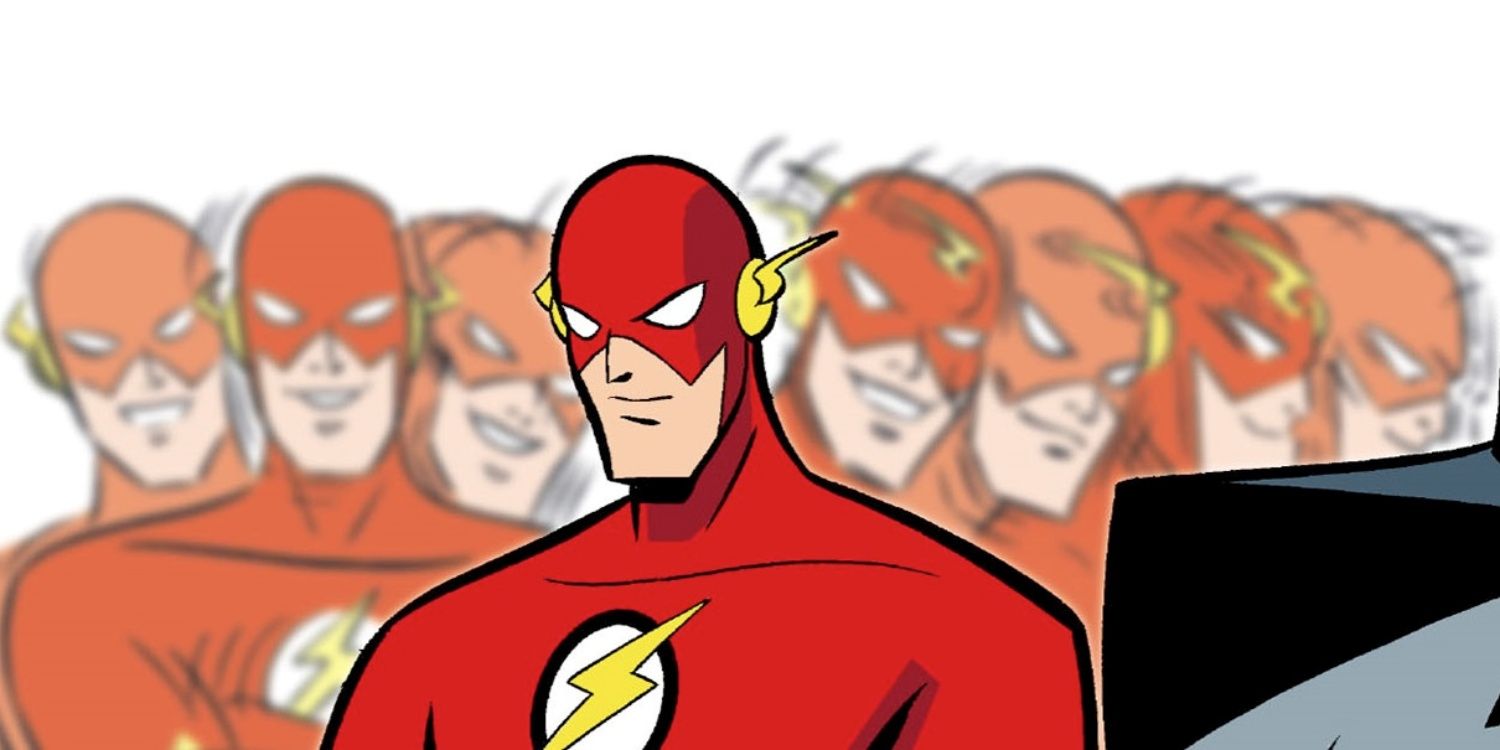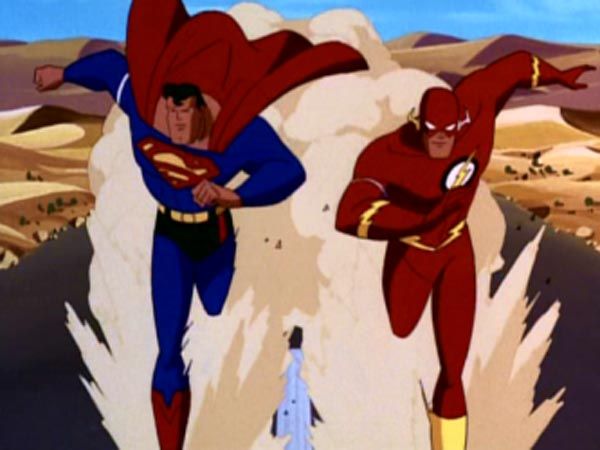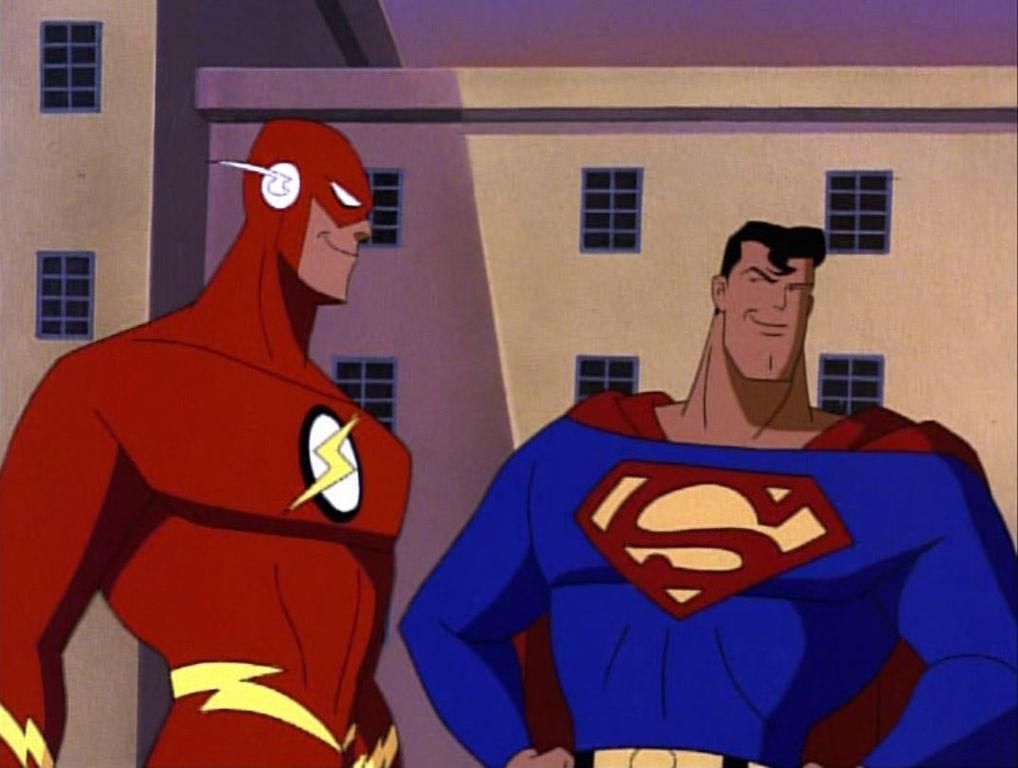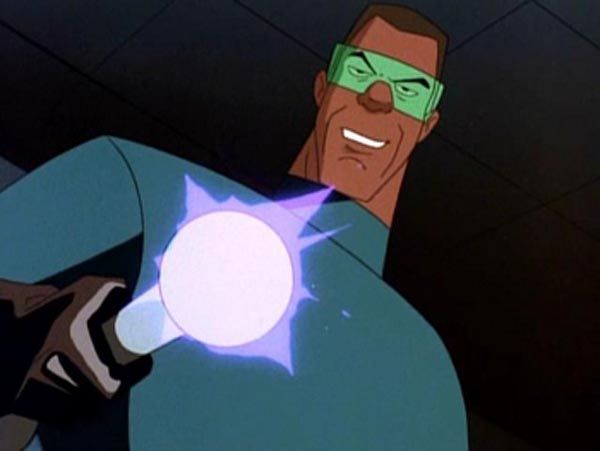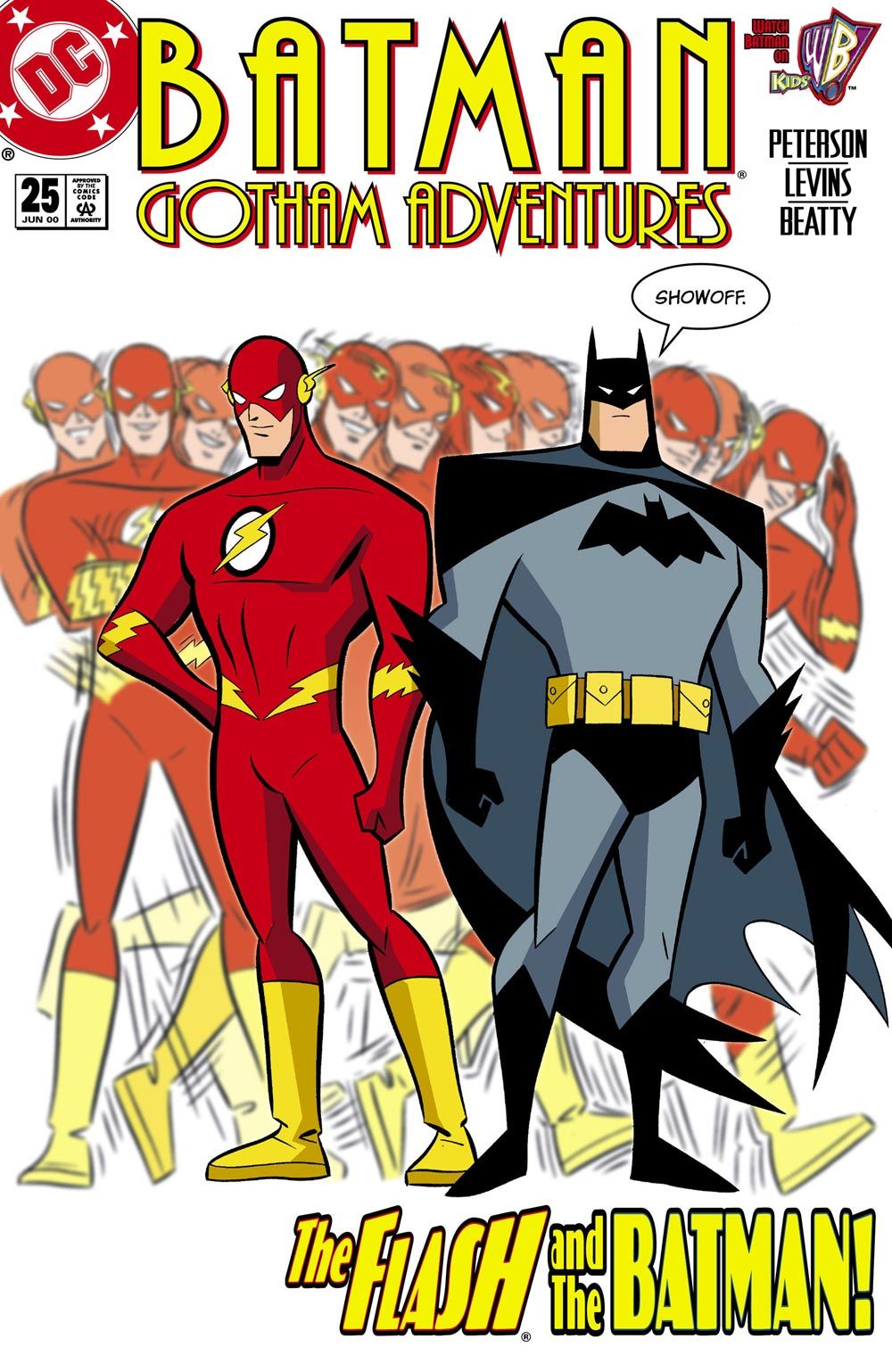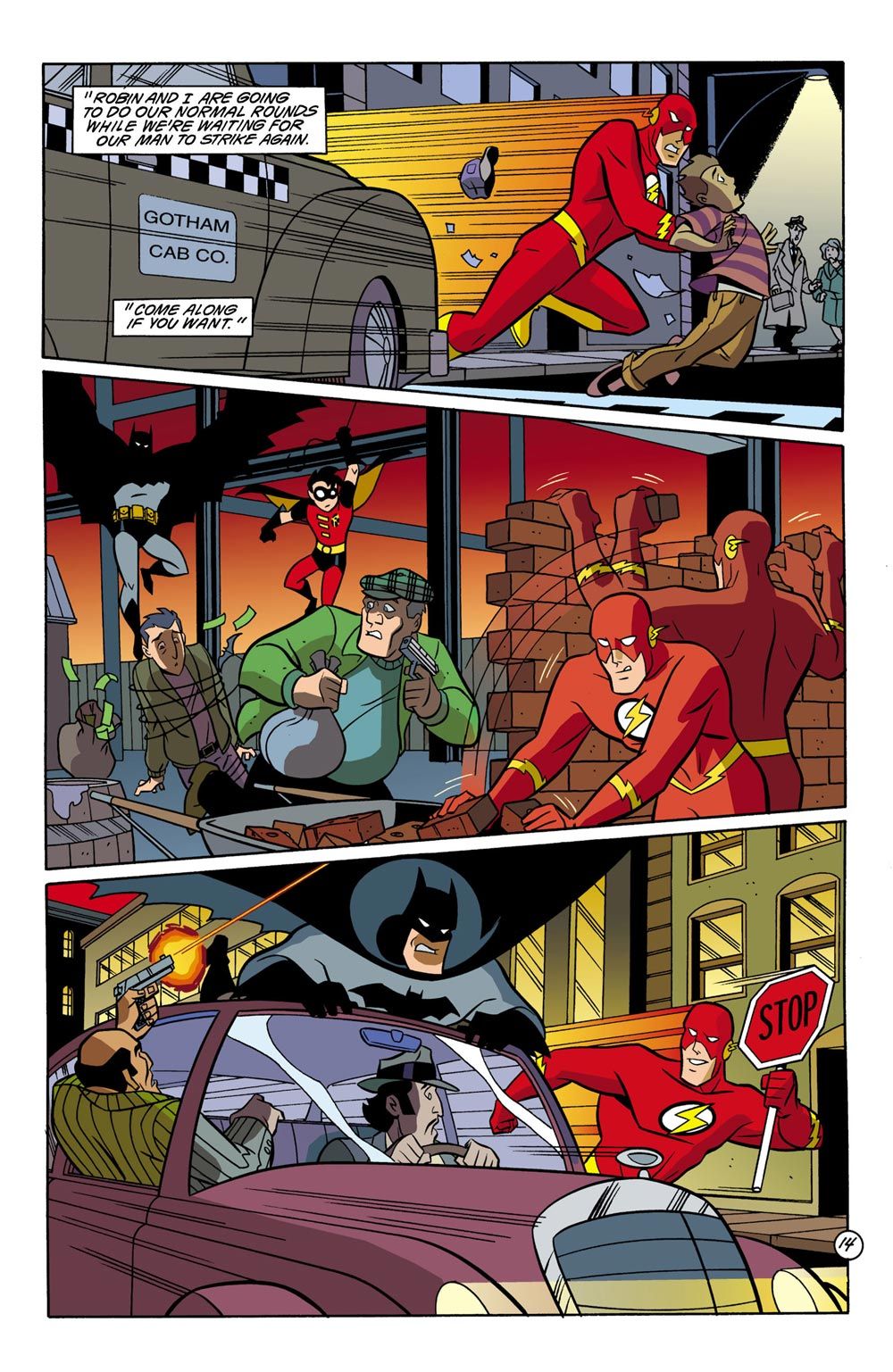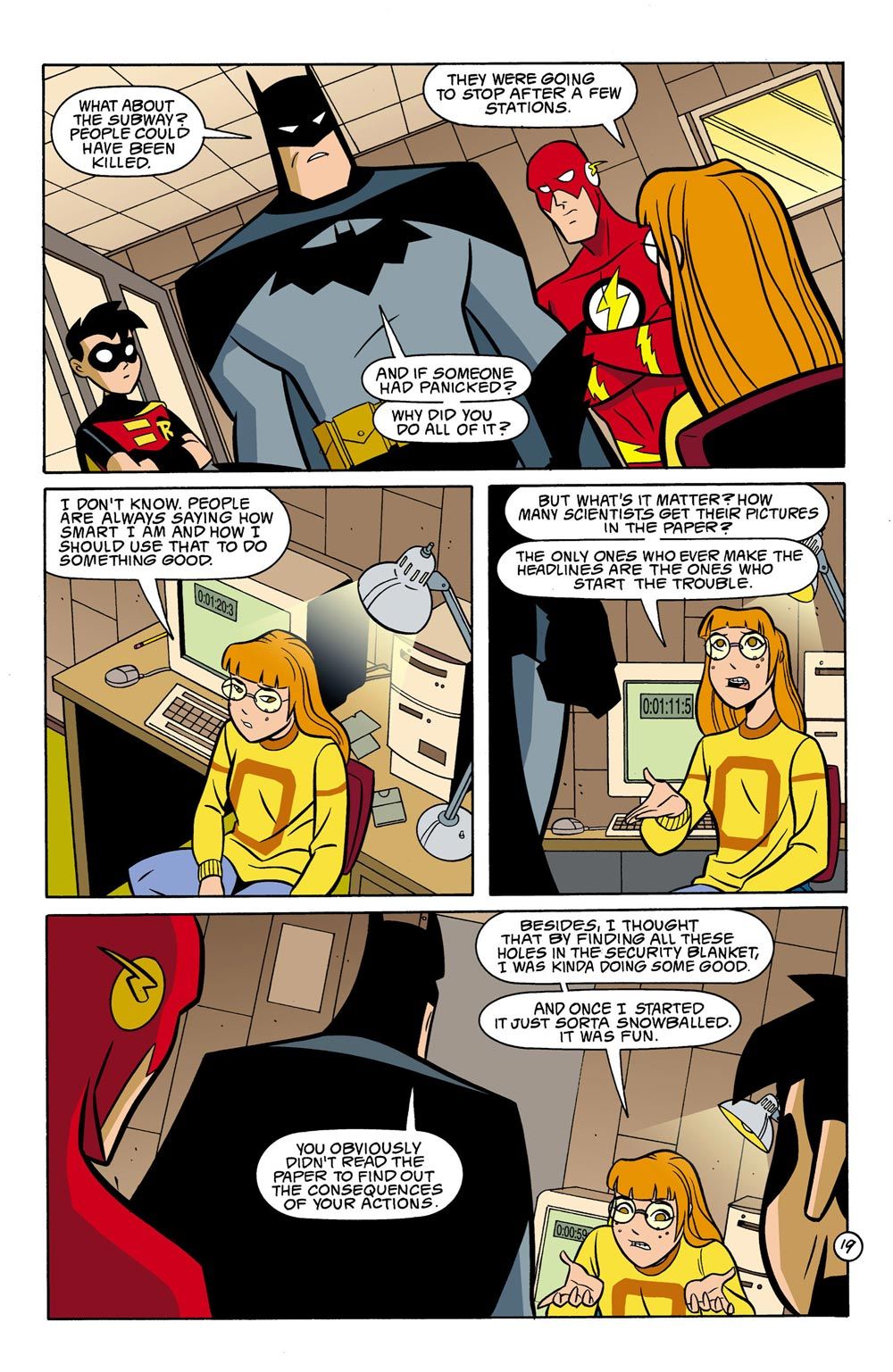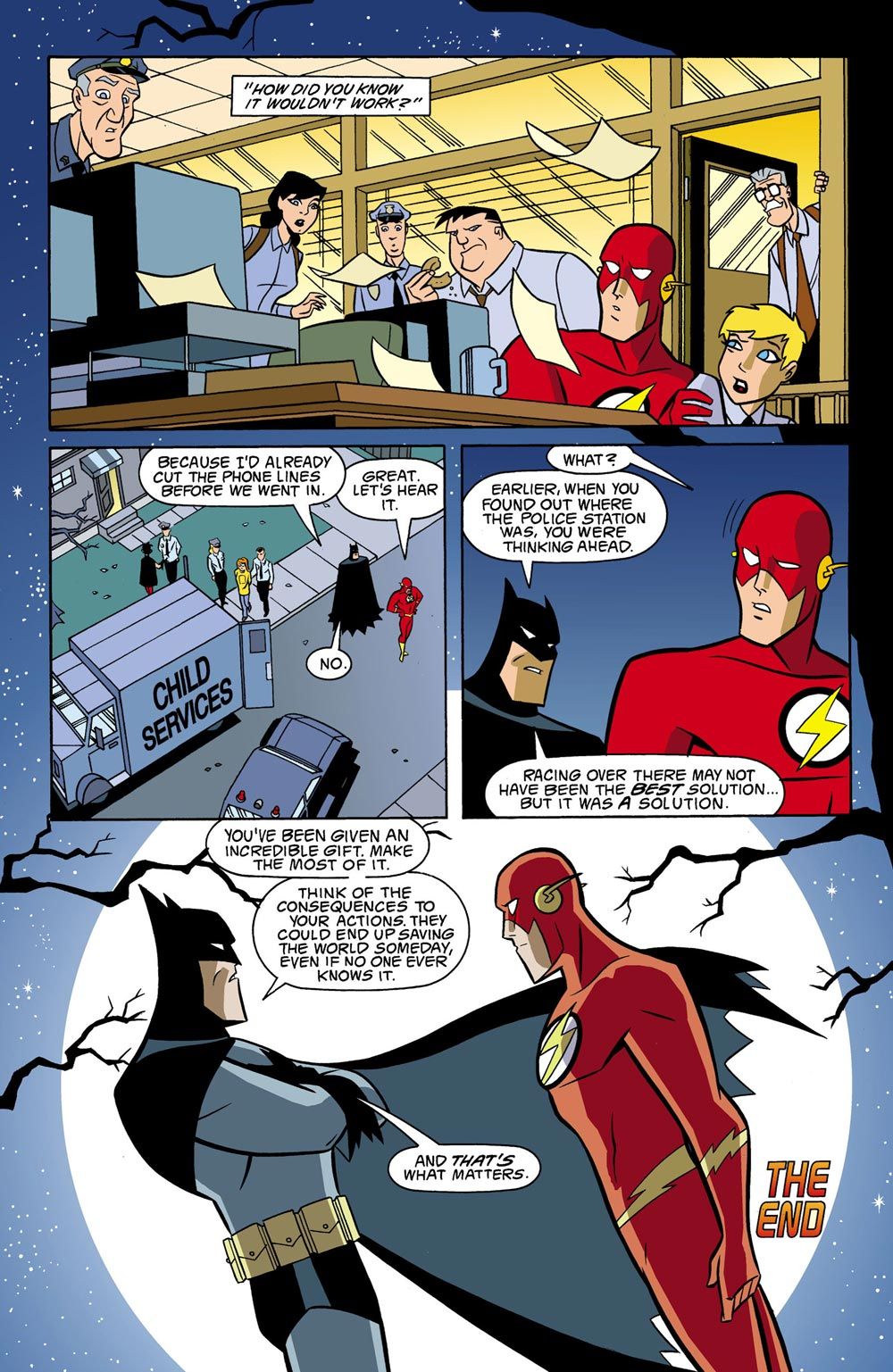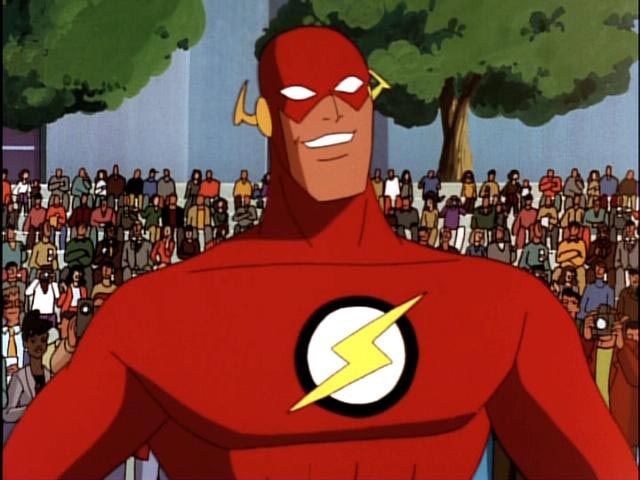Welcome to the eighteenth installment of Adventure(s) Time, an examination of a classic animated series and a related issue of its comic tie-in. A few weeks back, commenter Dave Anderson suggested we look back on some of the superhero team-ups from the DC Animated canon, and in that spirit, this installment will be dedicated to the earliest appearances of the Flash in the DC Animated Universe. Most viewers are likely familiar with Flash's race against Superman in the "Speed Demons" episode of Superman: The Animated Series. But how many fans know that the Flash also made his way into an issue of the Batman: The Animated Series tie-in comic?
"Speed Demons" is the seventeenth episode of Superman: The Animated Series, written by Rich Fogel and directed by Toshihiko Masuda, debuting on September 13, 1997. The legendary studio Tokyo Movie Shinsha provides the animation, making this one of the more anime-looking, and just all around good-looking, episodes of the show's run.
RELATED: Reverse Flash Investigates the Truth About DC’s Rebirth Universe
The episode opens with a Metropolis crowd awaiting Superman's opponent in a charity race. His rival is said to be a big shot hero in another town, but the citizens of Metropolis are doubtful that anyone can outrace the famous Man of Steel. They quickly realize this out-of-town hero just might be fast enough to pull off the feat -- and he's arrogant enough to know it.
An early pitch for Superman: The Animated Series, as Bruce Timm has revealed in interviews, was to establish Superman, then have him team up with a variety of heroes who would eventually form the Justice League. Oddly enough, Timm at this time was adamant about not doing a Justice League television series, so perhaps the idea was to have the League appear as regular guest stars on the series. It was DC exec Jenette Kahn who squashed this concept, telling the producers that Superman should be the star of a Superman TV show, and the series had to be more than a vehicle for team-up stories. Timm agreed, and the series we know today was developed.
The occasional guest star did make his way on to Superman, however, and the Flash has one of the more memorable appearances. Interestingly, Flash receives no origin in the episode; the audience simply has to accept his existence as a fait accompli, the out-of-town superhero with a big mouth. (Not that the subsequent Justice League television series was eager to delve into origins, anyway.) When Flash arrives for the race, it's clear that the producers aren't going for the more dignified Barry Allen interpretation of the character -- this is Wally West (although unnamed), specifically the more immature incarnation, perhaps inspired by writer Mike Baron's run in the comics. Choosing Wally not only kept the show concurrent with modern DC continuity -- something the series occasionally had an issue with, due to its devotion to a more traditional Superman -- but it also enabled Flash to make his presence felt in just a few seconds. A more mature, respectful hero racing Superman across the globe for charity could've led to a dull story. How do you tell one super-fast, straight-laced hero from the other?
The race begins, enabling TMS to animate a variety of landscapes, and create some impressive "speed" shots. Superman: The Animated Series always had super-speed as one of the powers in the hero's arsenal, but rarely did much with the concept. Here, it's the main focus, and proof that in the right hands, speed can be just as cool as feats of strength.
RELATED: CW Announces Supergirl, Flash, Arrow & Legends Fall 2017 Debut Dates
An entire episode of Superman and Flash racing against the globe doesn't lend itself to too much drama (although the story does more with the concept than you might expect), so a villain must be introduced. This episode borrows a foe from Flash's rogues gallery, the Weather Wizard. In this incarnation, Mark Mardon has devised a scheme with his reluctant, schlubby brother Ben to use the velocity generated by Superman and the Flash to power a weather machine. Mark declares his ransom, and demonstrates the power of his device by generating a storm off the coast of Australia. The storm causes an oil liner to crash, and Superman and Flash team up to save the crew and expel the oil from the water.
A few more weather catastrophes are generated, as Ben becomes increasingly opposed to his brother's plan. While Flash and Superman realize the tracking bands given to them at the start of the race were created by the Weather Wizard, Ben is cutting ties with his brother. To symbolize just how unhinged Mark has become, he actually tries to use the weather to kill his plot’s final loose end -- his brother. Superman and Flash arrive in time to save Ben, and from him, learn the Weather Wizard's location. The heroes unite to apprehend Mark, and because this is Superman's show, he also saves Flash's life in the finale. The question of who's the fastest remains unresolved, so just for fun, Superman and Flash decide to restart the race as the episode closes.
RELATED: Which Batman: The Animated Series Episode is an Overlooked Classic?
Superman: The Animated Series wasn't as psychologically deep as its Gotham City predecessor -- it wasn't intended to be -- but there were some efforts to add humanity to the stories. In this episode, it's the conflict between Ben and Mark, and Ben's horrified realization that his brother is now an attempted murderer, that adds some weight to the plot. It's not as effective as many of the family-oriented Batman episodes, but the Mardon brother scenes are preferable to the alternative of the Weather Wizard as a lone supervillain, monologuing about his latest scheme. And the banter between Flash and Superman is pretty amusing, allowing Superman to play off another character who has a bit more personality than he's used to tolerating.
So, if a Superman/Flash pairing turns out to be pretty fun, why not try again with the Dark Knight? That’s the premise behind Gotham Adventures #25 (June 2000), from the regular creative team of writer Scott Peterson and penciler Tim Levins. Gotham Adventures was the third incarnation of the Batman Adventures series, as DC relaunched the book each time the television series was revamped. Gotham Adventures ties in with the New Batman Adventures era of the series, the “new look” episodes that were paired with Superman: The Animated Series.
The story begins with the Flash inserting himself into Batman and Robin’s nightly patrol of Gotham City, much to Batman’s annoyance. Flash explains he’s here to track a computer hacker who’s recently moved from Central City to Gotham. Some of the hacking appears to be juvenile pranks (like using the Gotham Gazette’s electronic billboard to embarrass the Gotham High quarterback), while others involve subway trains possibly crashing into each other. Flash spends the night on patrol with Batman and Robin, investigating the hacking and helping with random crimes along the way.
Batman consistently lectures the Flash about acting before thinking, while Robin tries to explain to the speedster why Batman isn’t such a jerk after all. It’s Robin who deduces that the hacker is actually after notoriety, and is possibly close to his own age. Searching through the dependents of recent Central City transfers, they find Bobby Denison, a juvenile delinquent with a genius IQ. At her home, she confesses to the crimes, but claims she never meant any harm.
Her latest stunt is a bug that will generate a light show on the computer monitor of Officer Linda McLaughlin, the cop who’s investigating the hacking. Batman, because he’s Batman, immediately knows McLaughlin is epileptic and will suffer a seizure if she witnesses the display. Flash races to the GCPD station and rescues McLaughlin…or so he thinks. Turns out, Batman cut the phone lines (remember this was the year 2000) before the heroes even entered Bobby’s home. He compliments Flash for planning ahead anyway, memorizing the layout of Gotham, and reminds Flash that true heroism is often anonymous.
The Peterson/Levins run of Gotham Adventures is somewhat controversial amongst fans, with some readers complaining that Peterson’s plots were too thin, and Levins’ art being dismissed as “too cartoony.” Personally, I think these issues are consistently entertaining, even if the stories aren’t overly elaborate and might exhibit the occasional plot hole. And complaining about cartoony art in a cartoon tie-in book always seemed odd to me. Levins did have more of a Disney influence than fans would associate with the DCAU material, but he made it work. The Levins run of Gotham Adventures keeps all of the major players on-model, but it’s also fun to see him play around with the peripheral characters who appear in the stories. The color work of Lee Loughridge shouldn’t be overlooked, either. Previously, most of the Adventures comics had to be colored as standard DC titles, but advances in computer coloring allowed Loughridge to create a truly “animated” feel for the book.
The Wrap-Up
Design-y
The Flash we see in "Speed Demons" is four years away from his redesign on the Justice League series. Under DC's guidance, the shade of red on his costume was altered, and the black circle that surrounds his emblem was dropped. The way actual black is used as a highlight color on Flash was also abandoned, but I personally think it's an interesting look. Apparently, the producers didn't think the original Flash model was too terribly different, because they clipped a shot of him racing towards the camera from "Speed Demons" (at around 18:30) and recycled it in an early Justice League episode.
Continuity Notes
The episode doesn't definitively state which hero is faster, but the traditional comics interpretation has Flash as the victor. A later Justice League Unlimited episode ("Flash and Substance") actually shows us Central City’s Flash Museum, and in the exhibit dedicated to the race seen this episode, Flash is declared the winner.
”Huh?” Moment
Hacker Bobby Denison pleads ignorance to the disappearance of the Gotham High quarterback…as do we all. This story detail isn’t introduced in the Gotham Adventures issue until Batman confronts Bobby in her home, and is never resolved. Perhaps the implication is that the quarterback went into hiding after Bobby publically embarrassed him, but it just reads as a strange plot point to toss out there and never resolve.
Hey, I Know that Voice...
Actor Charlie Schlatter provides the initial voice of the Flash, turning in a performance that reminds me very much of Loren Lester's portrayal of Robin/Nightwing. Schlatter was replaced by Michael Rosenbaum on Justice League, but would later return as the Flash in the unrelated The Batman series. Also, Justice League vet Carl Lumbly (Martian Manhunter) makes a surprise appearance in "Speed Demons" as the mayor of Metropolis.
Battle of the Mismatched Hero Combos
Pitting the earnest Superman against the show-off Flash is one way to create friction…but the grim, taciturn Batman from the New Adventures era is an even better foil. The point the Gotham Adventures story is making is a bit muddled, though. There is a consistent theme to the issue -- a desire for attention is dangerous, creating criminals like Bobby Denison. The closing page acts as if Batman’s been lecturing Flash about this all along, but that’s not the case. Batman’s bothered by Flash’s seeming recklessness, not whatever desire for fame the Flash allegedly has. Regardless, it’s a fun story that plays the characters off each other well. "Speed Demons" also has its moments, but Batman and Flash are so oddly matched, they’re simply a better pairing. All of this is prelude to Justice League, however, which takes the concept of incompatible heroes to another level.
That’s all for now. If there are any cartoon/comics pairings you’d like to see, just leave a comment or contact me on Twitter.

